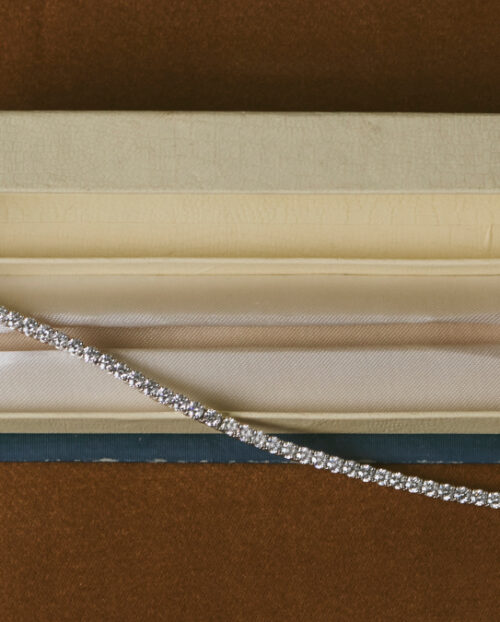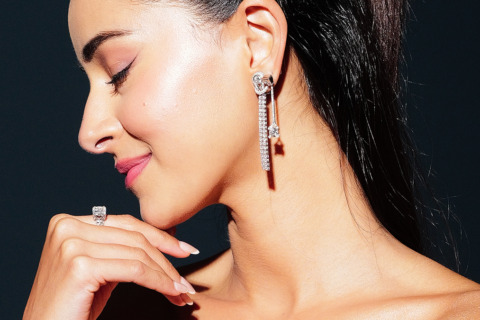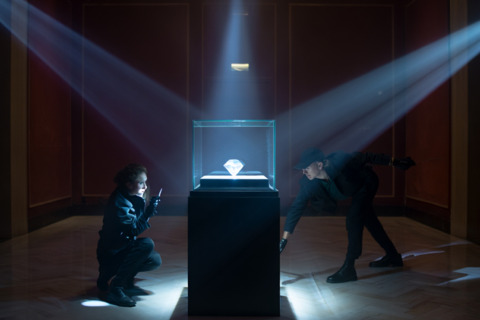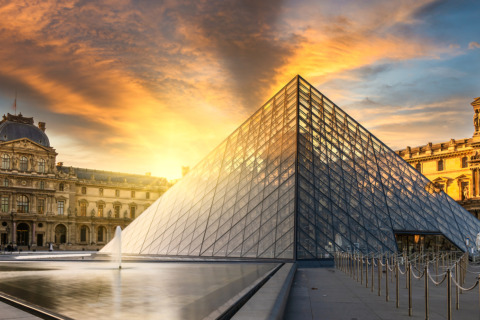When it comes to the history of natural diamonds, their sparkling backstory spans royal courts, ancient empires and sacred rituals around the world.
Diamonds have long been a symbol of power and prestige for kings and conquerors as well as early civilizations, who celebrated their light, strength and spiritual significance.
Woven through with myth, magic and meaning, it’s not hard to see why the treasured jewels became one of the world’s first cultural status symbols – or why the allure of natural diamonds still shines so brightly today.
Why people have long treasured natural diamonds…
Did you know that natural diamonds date back billions (yes, billions) of years? In fact, scientists estimate the oldest natural diamonds are between 3.5 billion and 90 million years old.
According to Courtney Ann Stewart, art historian, gemologist and curator at The Metropolitan Museum of Art, one of the first known references to a diamond appeared in 1st century CE Rome. At the time, diamonds were kept in their raw octahedral form (picture the shape of the diamond in a deck of cards) to preserve their carat weight and natural purity1.
In those early days, diamonds were called ‘adamas’, a Greek word meaning ‘unconquerable’ or ‘indestructible’2. Fitting, since they’re still the hardest naturally occurring substance on Earth3. Attempts to challenge their durability were creative, to say the least: “Plenty of old texts insisted diamonds could be softened in goat blood,” explains Stewart. Others showed diamonds in pots of fire, trying to prove their indestructible nature.
As trade routes expanded, diamonds began to travel, particularly from India, the world’s leading diamond source at the time. Some Roman coins were even set with raw diamonds, their pointed tips exposed to highlight value and rarity. But diamonds weren’t just commercial goods at that time. In Roman culture, they were worn as amulets and believed to offer protection and divine power, particularly in battle4. Cutting them was considered ‘spiritually taboo’ as they were not just gemstones but sacred treasures.
The divine connection didn’t stop there. In Greek culture, natural diamonds were thought to be the tears of gods or fragments of fallen stars5. Even Plato spoke of their celestial origins6. According to Greek mythology, stars were the children of Eos (goddess of dawn) and Astraios (father of the stars and astrology), giving diamonds an otherworldly lineage, much of which still surrounds them now.
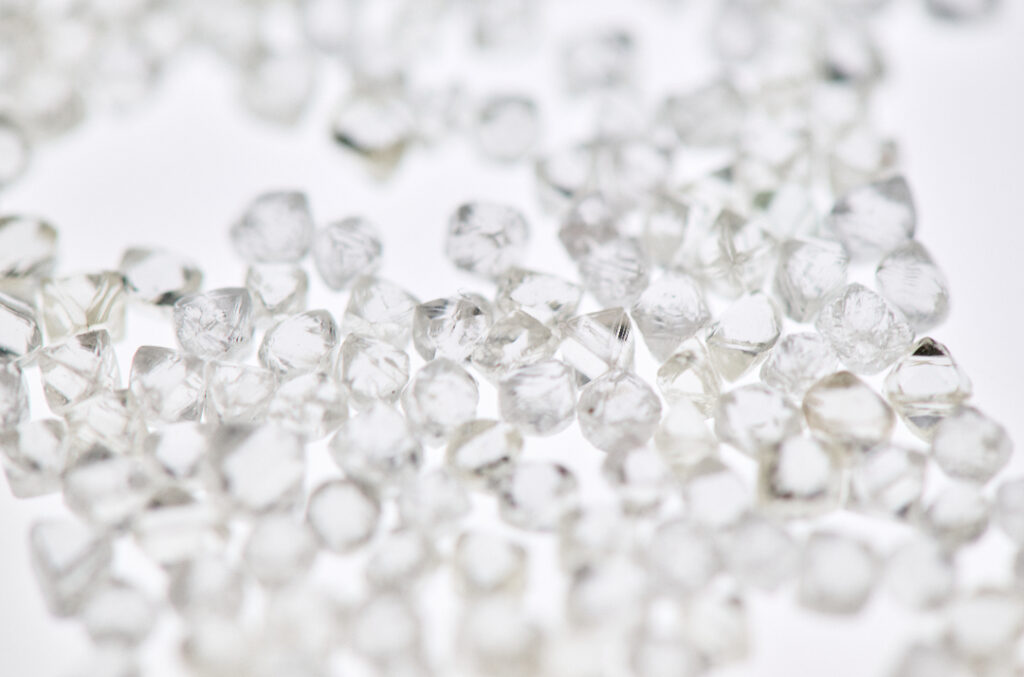
The cosmic origins of natural diamonds
Even today, natural diamonds’ cosmic link to light or fallen stars lives on. Scientifically, we know natural diamonds formed from carbon atoms or ancient stardust during Earth’s formation some 4.5 billion years ago. And their sparkle? A reflection of their pure crystal structure – which makes sense, since diamonds have been connected to stars and sunlight for centuries.
This symbolism even shaped religious practices. In Egyptian culture, for example, radiant gems were often used in sacred symbols like the ankh – a cross-shaped emblem of life. While diamonds themselves weren’t common, the light they reflect has long been associated with divine energy and sun worship, especially in connection to Ra, the powerful sun god.
Why royalty and diamonds are forever entwined
While natural diamonds aren’t exactly easy to come by in today’s world, according to legend, they were once nearly impossible to find.
Stewart points to ancient Turkish texts describing a dramatic diamond mining tale – deep valleys filled with venomous snakes were said to guard the precious gems. Brave men would toss chunks of meat into the valley, hoping the diamonds would stick to them, before vultures swooped down to pick up the meat, along with the diamonds, and unknowingly delivered them to higher ground. Risky? Definitely. But a fascinating indication of just how far people were willing to go to claim the world’s most coveted treasure.
Thankfully, diamond recovery has evolved since then! And as early trade routes connected East and West, the status of natural diamonds only grew. One of the most famous diamonds in history, the Koh-i-Noor, first emerged in records linked to India’s legendary Kollur mines7.
This pale, colorless gemstone has links to Persian, Afghan, Indian, Sikh and British royalty – a rare jewel with a deeply layered legacy. Its name translates to ‘Mountain of Light’, and, in many cultures, is seen not just as beautiful, but as a divine blessing with mystical powers.
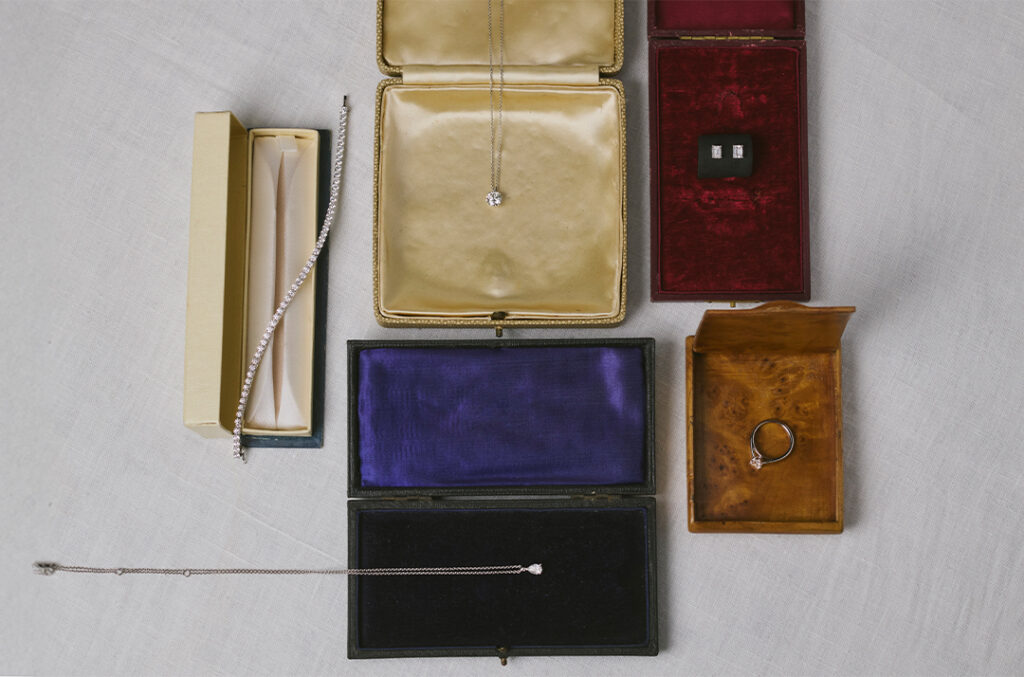
Diamonds that changed the course of history
The Koh-i-Noor: history’s most contested royal treasure
As beguiling as she is, the facts around the Koh-i-Noor are complex and hotly debated. Some trace the diamond back to 3200 BCE, though other records connect it to Sultan Babur of the Mughal Empire in the 16th century8.
Either way, it was carefully passed through dynasties and empires over the years before Iranian ruler Nader Shah seized it during the 1739 sacking of Delhi. Later, it landed in the hands of Afghan and Sikh rulers, before being taken by the British after they annexed the Punjab region in 1849.
Today, the 105.6-carat (it originally weighed 191 carats9) natural diamond sits among the British Royal Crown Jewels, recut and reshaped, but no less beautiful and still loaded with meaning.
The Sancy: a symmetrical powerhouse
France, too, boasts an impressive regal diamond legacy. The Sancy diamond, a pale yellow, shield-cut jewel, was one of the first known diamonds to be cut symmetrically – a dramatic turning point in the evolution and style of diamond culture.
Originally mined in India, the gemstone got its name from Nicholas Harlay de Sancy, a French financier and ambassador. Legend has it King Henry III borrowed the diamond to cover a bald spot on his crown – a look we’d truly love to see, non?
Still, King Henry III couldn’t keep it forever, and eventually, the Sancy made its way into the French royal collection, to be worn by Louis XV at his 1722 coronation. While its journey wasn’t quite as dramatic as the Koh-i-Noor’s, it remains one of Europe’s most cherished royal diamonds. You can admire it in person at the Louvre in Paris10.
The Cullinan: the giant that shaped a crown
Perhaps the most famous royal diamond of all time, the Cullinan, came from South Africa. Discovered in 1905 at the Premier Mine in the Transvaal region, this breathtaking blue-white gemstone weighed in at a staggering 3,106 carats11, making it the largest rough diamond ever found12. In fact, its clarity and size were so extraordinary at the time that it ended up being gifted by South Africa to England as a gesture of political goodwill and unity. We wish we had friends that generous!
The enormous responsibility of cutting the Cullinan went to renowned Dutch jeweler Joseph Asscher. With extreme precision, he managed to transform the rough diamond into nine spectacular large gemstones and nearly a hundred smaller ones. Some of the most celebrated cuts now live in the British Crown Jewels, including the Sovereign’s Sceptre, the elegant ceremonial staff held by kings and queens during formal royal occasions.
How natural diamonds still define star power
There’s a reason celebrities can’t stop wearing (or bragging about) natural diamonds – that glow of royal prestige has turned into some serious cultural clout. And for today’s A-listers, diamonds aren’t just a piece of jewelry, they’re statements of success. The grander, rarer and bolder the diamond jewelry, the bigger the flex – whether on the red carpet, an album cover or their social media grid.
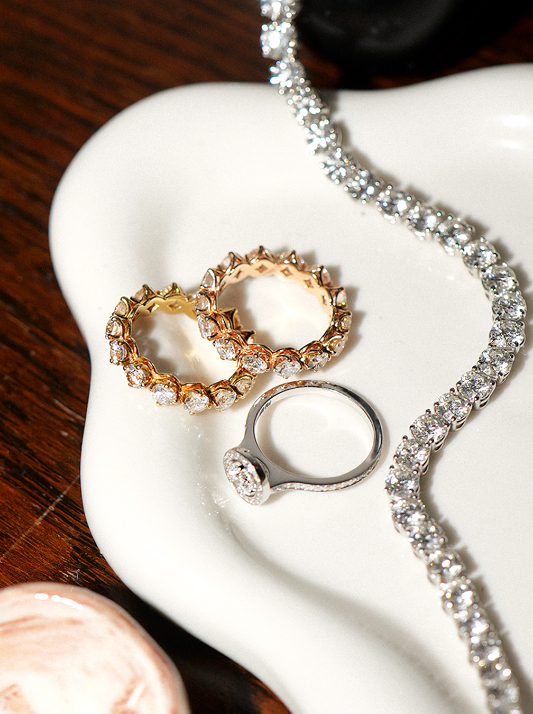
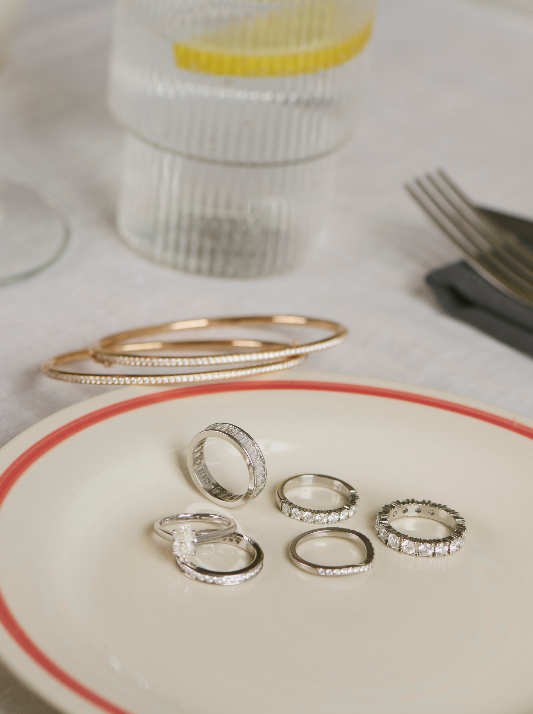
In music, diamonds have long been a status symbol. Remember Notorious B.I.G.’s iconic Jesus Piece in the ’90s? Or Nicki Minaj’s pink 54.47-carat Barbie diamond pendant in the 2000s? They were as much style choices as they were showcases of accomplishment and standing.
Films have long centered around the allure of beguiling diamonds, too – from Marilyn Monroe’s glittering jewels in Gentlemen Prefer Blondes to the fictional blue diamond necklace that falls into the Atlantic Ocean in Titanic.
Fast forward a few decades and the world’s biggest stars are still head-to-toe in diamonds – quite literally in the case of Rihanna (the singer of Diamonds, let’s not forget!), who wore a nine-carat pear-cut diamond toe ring to a pre-Met Gala party in 2023.
At this year’s Met Gala, Lewis Hamilton dazzled on the blue, flower-adorned carpet with a vintage Briony Raymond diamond hat brooch as well as a pair of Briony Raymond white diamond stud earrings.
Months earlier, Scarlett Johansson turned heads at the 2025 Oscars in a De Beers pear-shaped diamond necklace from the house’s spectacular Alchemist of Light High Jewelry collection.
Diamonds are a symbol of strength, individuality and, dare we say it… pure magic!
Sources
- Courtney Ann Stewart, De Beers History of Diamonds talk in May 2025 ↩︎
- Purelydiamonds.co.uk, How diamonds are formed ↩︎
- University of Cambridge, Harder than diamond: have scientists really found something tougher than nature’s invincible material? ↩︎
- Diamond Rocks London, Diamonds in Greek and Roman mythology ↩︎
- Cape Town Diamond Museum, Diamond myths and legends ↩︎
- Diamond Rocks London, Diamonds in Greek and Roman mythology ↩︎
- Encyclopedia Britannica, Koh-i-noor ↩︎
- Historic Royal Palaces, The Crown Jewels up close ↩︎
- Encyclopedia Britannica, Koh-i-noor ↩︎
- Baunat.com, The Sancy Diamond: one of the loveliest diamonds in the world ↩︎
- Royal Collection Trust, The Cullinan Diamond ↩︎
- Royal Collection Trust, The Cullinan Diamond ↩︎
